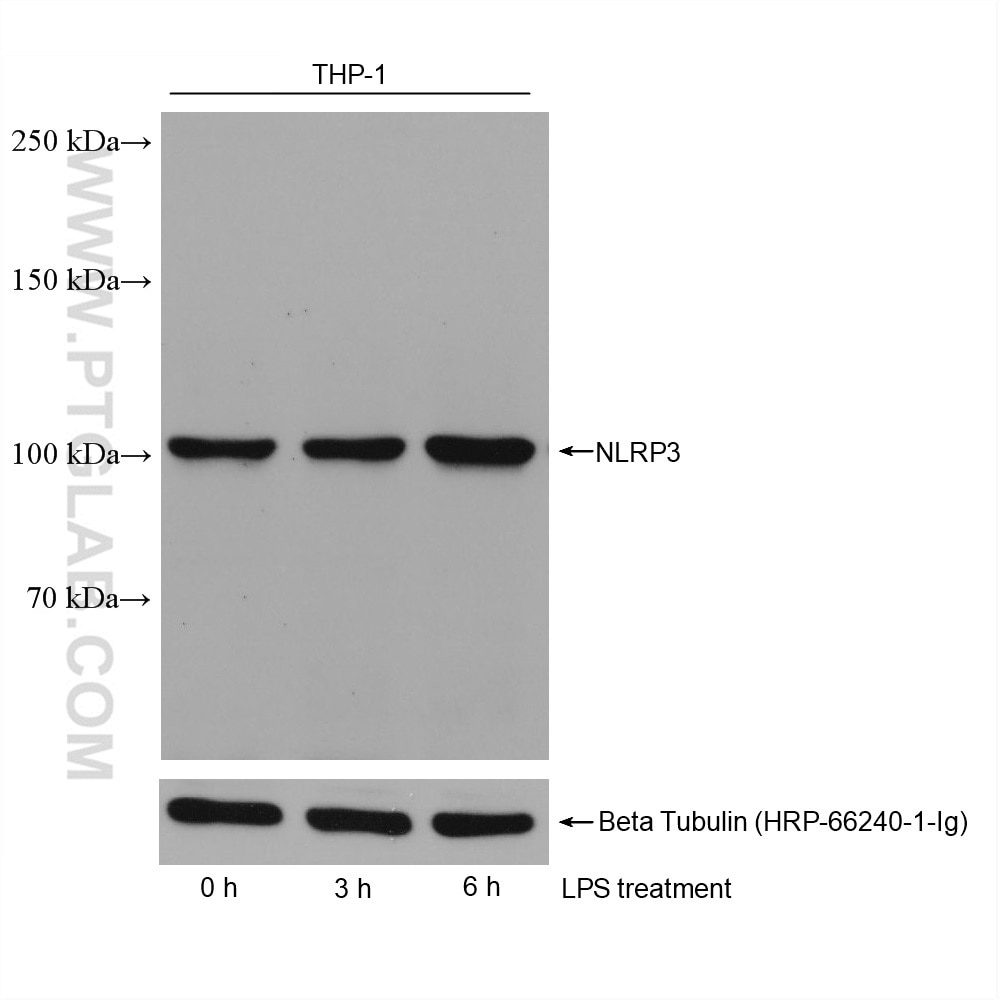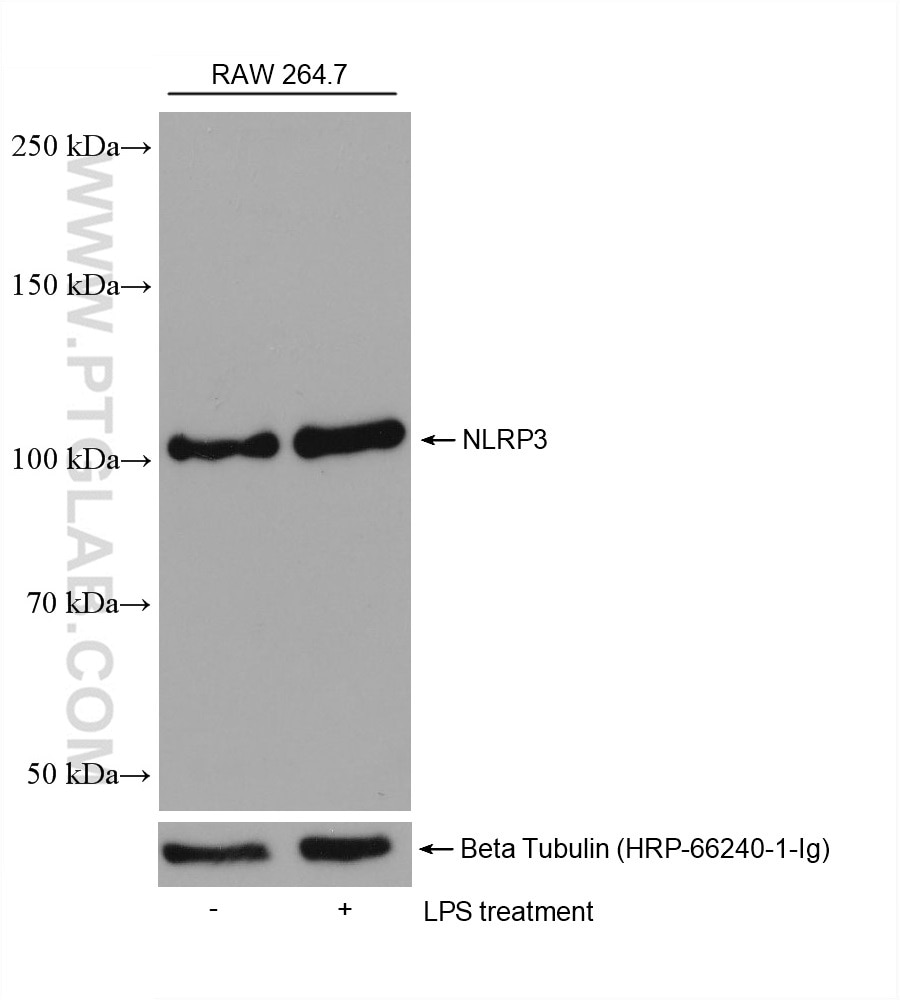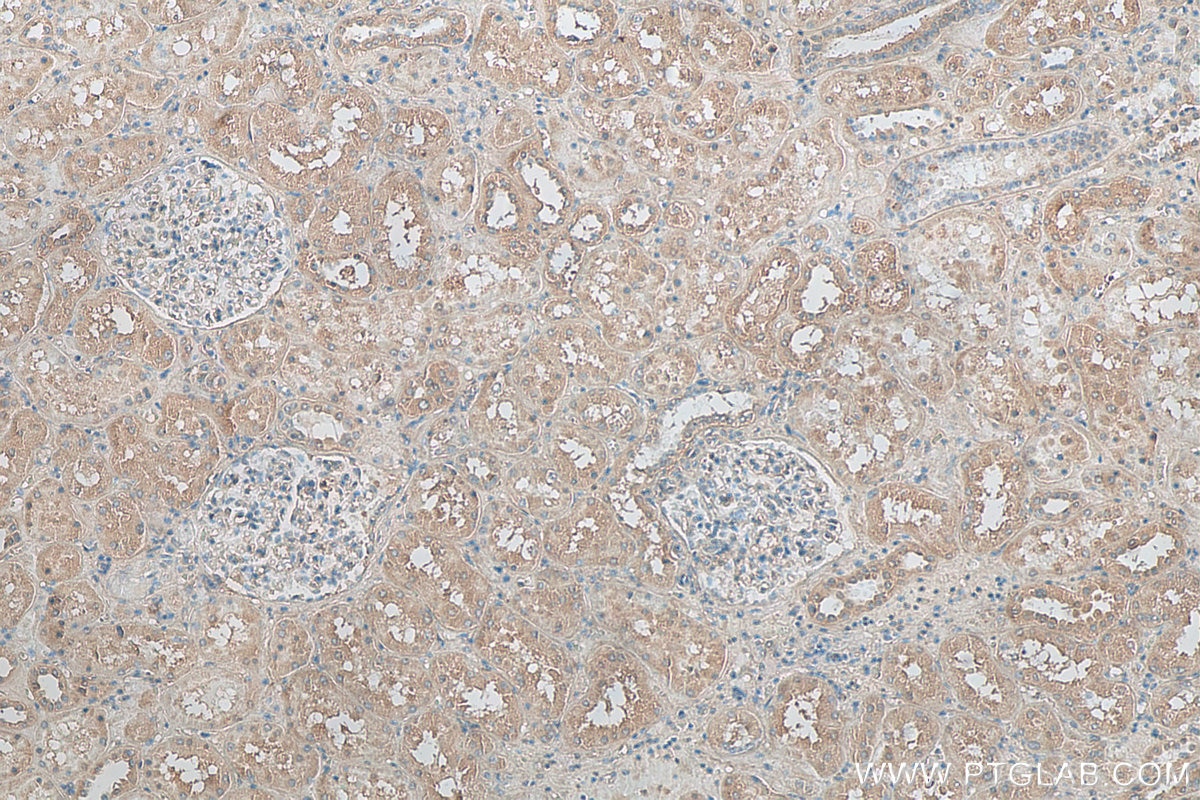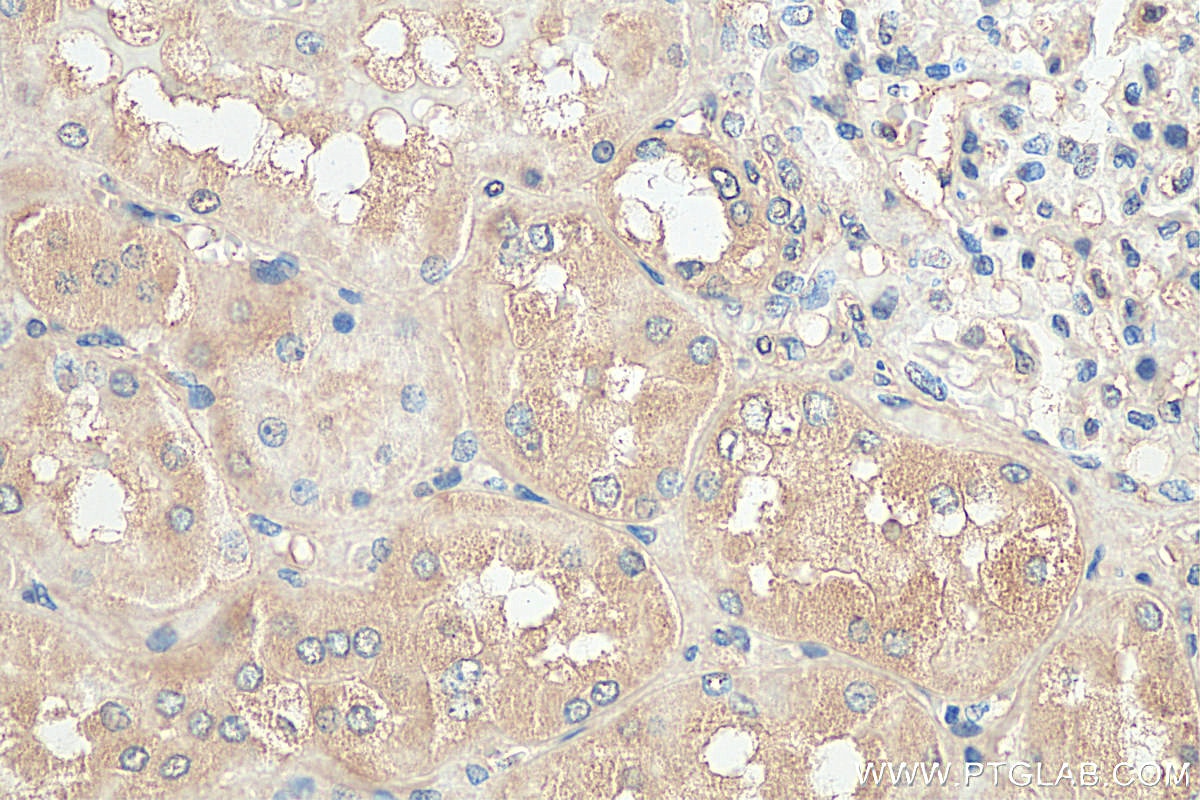- Featured Product
- KD/KO Validated
NLRP3 Monoclonal antibody
NLRP3 Monoclonal Antibody for WB, IHC, ELISA
Host / Isotype
Mouse / IgG2a
Reactivity
Human, Mouse and More (3)
Applications
WB, IF, IHC, ELISA
Conjugate
Unconjugated
CloneNo.
3H1A7
Cat no : 68102-1-Ig
Synonyms
Validation Data Gallery
Tested Applications
| Positive WB detected in | THP-1 cells, RAW 264.7 cells, LPS treated RAW 264.7 cells, LPS treated THP-1 cells |
| Positive IHC detected in | human kidney tissue Note: suggested antigen retrieval with TE buffer pH 9.0; (*) Alternatively, antigen retrieval may be performed with citrate buffer pH 6.0 |
Recommended dilution
| Application | Dilution |
|---|---|
| Western Blot (WB) | WB : 1:2000-1:10000 |
| Immunohistochemistry (IHC) | IHC : 1:50-1:500 |
| Sample-dependent, check data in validation data gallery | |
Published Applications
| WB | See 22 publications below |
| IHC | See 5 publications below |
| IF | See 6 publications below |
Product Information
68102-1-Ig targets NLRP3 in WB, IF, IHC, ELISA applications and shows reactivity with Human, Mouse samples.
| Tested Reactivity | Human, Mouse |
| Cited Reactivity | human, rat, mouse |
| Host / Isotype | Mouse / IgG2a |
| Class | Monoclonal |
| Type | Antibody |
| Immunogen | NLRP3 fusion protein Ag26289 相同性解析による交差性が予測される生物種 |
| Full Name | NLR family, pyrin domain containing 3 |
| Calculated molecular weight | 118 kDa |
| Observed molecular weight | 110 kDa |
| GenBank accession number | NM_001079821 |
| Gene symbol | NLRP3 |
| Gene ID (NCBI) | 114548 |
| Conjugate | Unconjugated |
| Form | Liquid |
| Purification Method | Protein A purification |
| Storage Buffer | PBS with 0.02% sodium azide and 50% glycerol pH 7.3. |
| Storage Conditions | Store at -20°C. Stable for one year after shipment. Aliquoting is unnecessary for -20oC storage. |
Background Information
NALP3, also named as C1orf7, CIAS1 and PYPAF1, belongs to the NLRP family. NLRP3, a key and eponymous component of the NLRP3 inflammasome, plays a crucial role in innate immunity and inflammation. NALP3 may function as an inducer of apoptosis. It interacts selectively with ASC and this complex may function as an upstream activator of NF-kappa-B signaling.NALP3 inhibits TNF-alpha induced activation and nuclear translocation of RELA/NF-KB p65. Also inhibits transcriptional activity of RELA. NALP3 activates caspase-1 in response to a number of triggers including bacterial or viral infection which leads to processing and release of IL1B and IL18. Defects in NLRP3 are the cause of familial cold autoinflammatory syndrome type 1 (FCAS1) which also known as familial cold urticaria. Defects in NLRP3 are a cause of Muckle-Wells syndrome (MWS) which is urticaria-deafness-amyloidosis syndrome. Defects in NLRP3 are the cause of chronic infantile neurologic cutaneous and articular syndrome (CINCA) which also known as neonatal onset multisystem inflammatory disease (NOMID).
Protocols
| Product Specific Protocols | |
|---|---|
| WB protocol for NLRP3 antibody 68102-1-Ig | Download protocol |
| IHC protocol for NLRP3 antibody 68102-1-Ig | Download protocol |
| Standard Protocols | |
|---|---|
| Click here to view our Standard Protocols |
Publications
| Species | Application | Title |
|---|---|---|
Free Radic Biol Med Aristolochic acid I exposure triggers ovarian dysfunction by activating NLRP3 inflammasome and affecting mitochondrial homeostasis | ||
Oxid Med Cell Longev Hydrogen Sulfide Ameliorated High Choline-Induced Cardiac Dysfunction by Inhibiting cGAS-STING-NLRP3 Inflammasome Pathway | ||
Front Immunol USP50 regulates NLRP3 inflammasome activation in duodenogastric reflux-induced gastric tumorigenesis | ||
Front Pharmacol Bacteroides dorei BDX-01 alleviates DSS-induced experimental colitis in mice by regulating intestinal bile salt hydrolase activity and the FXR-NLRP3 signaling pathway | ||
Int J Mol Sci Ursolic Acid Alleviates Neuroinflammation after Intracerebral Hemorrhage by Mediating Microglial Pyroptosis via the NF-κB/NLRP3/GSDMD Pathway | ||
J Ethnopharmacol ZeXieYin formula alleviates atherosclerosis by inhibiting the MAPK/NF-κB signaling pathway in APOE-/- mice to attenuate vascular inflammation and increase plaque stability |





